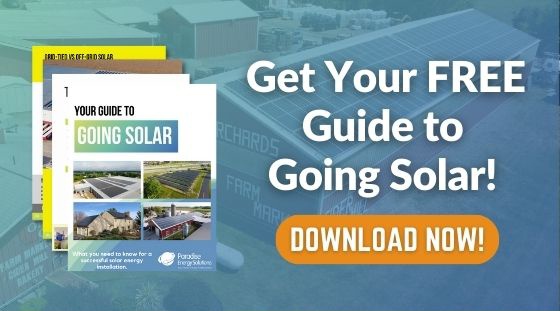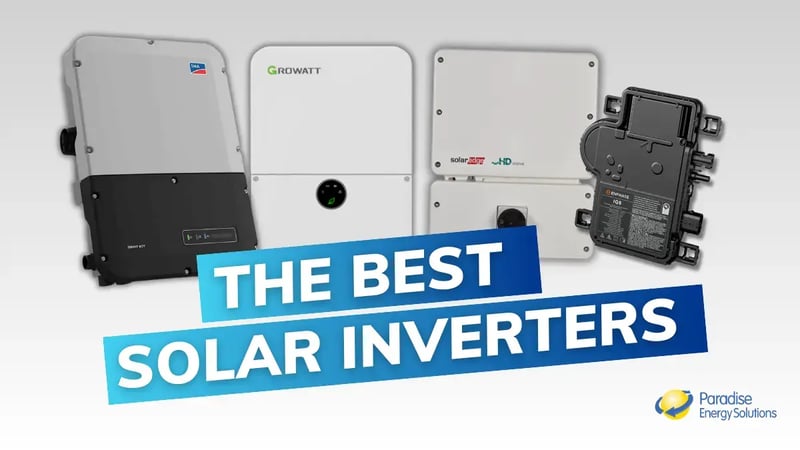
Table of Contents
Choosing the best solar inverter isn’t as simple as picking the cheapest or flashiest option. In fact, making the wrong choice could affect your solar system’s performance, reliability, and long-term costs.
Picking the right solar inverter is even more crucial than the panels or other system components you select.
That’s why we’ve done the hard work for you. In this expert-verified guide, we’ll explain how solar inverters work, why choosing the right one matters, and reveal the six best solar inverter brands of 2025—carefully reviewed and handpicked by our team of solar professionals at Paradise Energy.
Whether you're a homeowner looking to slash your electric bill or a business leader ready to protect your bottom line, we’ll help you find the right inverter for your solar investment.

Meet Our Expert Reviewer
Larry Beiler is the VP of Design & Procurement at Paradise Energy Solutions. With nearly 15 years of experience in the solar industry, Larry holds two NABCEP certifications and has played a key role in the design of many of our 2,000+ solar installations. He leads our team in carefully evaluating and selecting the top-performing equipment we install for both commercial and residential customers.
Quick Glance – The 6 Best Solar Inverters for 2025
Here's a quick look at the six best solar inverter brands we recommend and regularly install at Paradise Energy.
Why Your Solar Inverter Matters
Your inverter isn’t just a piece of equipment—it’s a long-term investment. Making the right choice affects:
- How efficiently your system performs
- Your ability to track and troubleshoot problems
- The financial return on your solar system
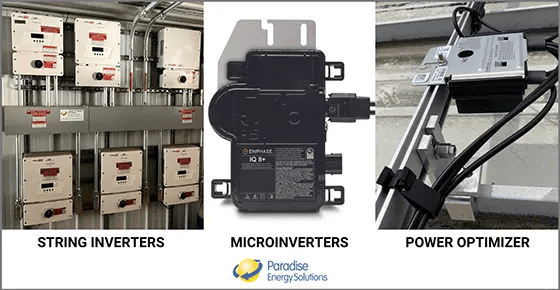
Every solar inverter brand shares a lot of the same features and attributes. Price, reliability, efficiency, and product offering are, of course, among the factors that the Paradise Energy team examines when selecting the best solar inverter brands. However, there are three core things that we look at that differentiate and separate the top brands from the crowded inverter space.
Here are the three key factors the Paradise Energy team examines to identify the top solar inverter brands:
1. Monitoring Capabilities
We want to know what's happening with every system we install—without needing to send a crew out if something seems off. That’s why strong monitoring features are a must. Good monitoring allows both you and us to track your system's performance, spot any issues remotely, and even troubleshoot without rolling a truck.
2. Financial Stability of the Manufacturer
Solar inverters should last 10, 20, even 25 years. So, it’s crucial that the company behind your inverter is financially stable enough to honor warranties and provide support throughout that time.
Most of the companies on our list have faced financial challenges at some point—it’s not uncommon in the solar industry. While we closely monitor their financial performance, what concerns us most is when these struggles occur. If a company is struggling during a strong market, that's a significant red flag. On the other hand, financial difficulties during broader market downturns are less alarming.
3. Customer Support
Lastly, how well does the manufacturer support us—and ultimately you—as the customer? Do they offer solid technical resources? Do they help with troubleshooting and warranty claims?
These are the factors that separate good inverter brands from great ones.
Our Picks for the Top 6 Best Solar Inverters in 2025
Enphase Energy: Best for Smaller Roof Mounts
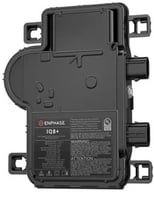 Headquartered in California, Enphase was founded in 2006 and has grown to become what many consider the industry's number-one microinverter company.
Headquartered in California, Enphase was founded in 2006 and has grown to become what many consider the industry's number-one microinverter company.
Where Enphase works best:
Ideal for smaller rooftop systems located near your interconnection point (where your system connects to the grid) - mostly residential.
Key features:
- Microinverters under each panel: Converts DC to AC at the panel level.
- Top-tier monitoring system.
- Battery and EV charger integration available (AC coupled).
- U.S. manufacturing option available.
Performance:
Efficiency typically ranges from 97-97.5%
Cost:
Generally, they’re our most expensive option. But they come with the industry’s best standard warranty: 25 years.
Reliability:
Enphase had issues about a decade ago, but they’ve made huge strides, and quality has improved greatly.
We recently toured the Enphase manufacturing facility in Texas and were impressed by their attention to detail and the numerous quality checkpoints built into every step of their process. Watch the behind-the-scenes factory tour video that we filmed during our visit.
SolarEdge: Best For Complex Roof Mounts
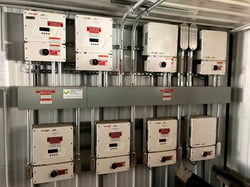 SolarEdge is an Israel-based company founded in 2006. They have quickly gained a positive reputation for their unique power optimizer design, which allows for individual panel-level monitoring that enhances efficiency.
SolarEdge is an Israel-based company founded in 2006. They have quickly gained a positive reputation for their unique power optimizer design, which allows for individual panel-level monitoring that enhances efficiency.
Where SolarEdge works Best:
If your roof has multiple angles, shading issues, or tricky layouts, SolarEdge inverters are a great option.
Key Features
- Power optimizers under each panel: Helps maximize production even if some panels are shaded or oriented differently.
- Excellent monitoring: Tracks performance at the individual panel level.
- Integrates with batteries, EV chargers, and load control.
- U.S. manufacturing option available: Helps qualify projects for the 10% domestic content tax adder.
Performance:
SolarEdge inverters offer efficiency in the 97-98% range.
Cost:
They're a bit more expensive, but you get advanced features and compliance with rapid shutdown requirements.
Warranty:
The standard is 12 years, and it is extendable up to 25 years on the inverters. Standard 25 years on the optimizers.
Potential downside:
We’ve seen some reliability issues in the past, though improvements have been made, and, from our experience, SolarEdge takes these issues seriously.
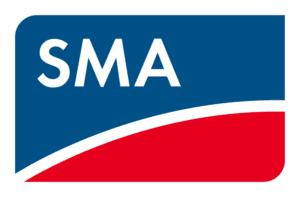
SMA: Best for Three-Phase Ground Mounts
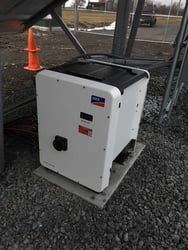 Based in Germany, SMA has manufactured solar inverters since 1981. They are widely considered the most reliable inverter on the market and enjoy a reputation for high-quality inverters.
Based in Germany, SMA has manufactured solar inverters since 1981. They are widely considered the most reliable inverter on the market and enjoy a reputation for high-quality inverters.
Where SMA works best:
Perfect for mid-to-large commercial three-phase ground mounts.
Key features:
- Strong, reliable monitoring portal.
- Can integrate batteries on single-phase systems, though it’s not the most flexible option.
- Manufactured in Germany (no domestic content option currently).
Performance:
Efficiency is high - typically 97.5-98%
Cost:
More affordable than Enphase and SolarEdge
Warranty:
Standard 10 years, extendable up to 25 years.
Reliability:
A solid, time-tested option with a proven track record.
Growatt: Best Cost-Effective Option for Single-Phase Grount Mounts
Established in 2011, Growatt is a prominent Chinese company known for being the leading residential solar inverter globally.
Where Growatt works best:
If you're looking for an economical option for larger single-phase ground mounts, Growatt is an excellent choice.
Key features:
- Offers an 11.4 kW inverter, great for large single-phase projects.
- Good monitoring features.
- Basic battery integration available, but flexibility is limited.
- Manufactured in China and Vietnam (no domestic content option).
Performance:
Efficiency between 97.5-98%.
Cost:
Our most budget-friendly option.
Warranty:
Standard 10 years, extendable up to 20 years.
Reliability:
So far, the reliability has been solid, but we have not installed many of them yet at the time of writing this guide.

CPS: Best for Mid-Sized Three-Phase Ground Mounts
With headquarters in Texas and offices nationwide, CPS America leads the U.S. market in 3-phase string inverters
Where CPS works best:
Ideal for mid-sized commercial three-phase systems, between 50 kW up to a few hundred kW.
Key features:
- Good monitoring capabilities.
- No battery integration (for models we use).
- Manufactured in Thailand, no U.S. domestic content option.
Performance:
Efficiency between 97.5-98%.
Cost:
One of the most economical choices for three-phase systems.
Warranty:
Standard 10 years, extendable up to 20 years.
Reliability:
We’re happy with what we’ve seen so far.
Solectria: Best for Large-Scale Ground Mounts
Yaskawa Solectria Solar, the largest U.S.-based inverter manufacturer, leverages over 20 years of solar expertise and the backing of Yaskawa’s century-long leadership in power electronics
Where Solectria works best:
Best suited for large ground mount systems—think megawatt-scale.
Key features:
- Manufactured in the U.S., helping projects qualify for domestic content incentives.
- Minimal bells and whistles—focuses on doing solar very well.
- Poor native monitoring system, but can integrate third-party monitoring platforms.
Performance:
97.5-98% efficiency range
Cost:
Very affordable, especially for larger projects.
Warranty:
Standard five years, extendable up to 10 years (shorter warranty typical for larger inverters).
Reliability:
We’ve had good experience with smaller Solectria inverters. Newer, larger models are promising, but we’re still gathering long-term data.
What is a Solar Inverter?
Simply put, a solar inverter is the brains of your solar energy system. It converts the DC electricity produced by your solar panels into usable AC power for your home or business. But inverters do more than just inversion. They also:
- Implement maximum power point tracking (MPPT): Ensuring you’re getting the most energy out of your panels.
- Monitor performance: Providing real-time system and panel-level data so you can track production and spot issues.
- Charge batteries (in hybrid models): Some inverters can also convert AC back to DC to store energy in batteries.
What Are The Types of Solar Inverters?
There are three main solar inverter designs on the market today:
- String Inverters - The classic setup—a central inverter box typically installed at ground level to handle inversion for the full solar array.
- Microinverters - Advanced panel-level inverters that convert DC to AC at each solar panel, offering advanced system monitoring and efficiency, especially for roofs with shading or varying tilt angles.
- Power Optimizers - Small devices installed under each panel that condition DC power before sending it to a central string inverter. They combine panel-level optimization with the reliability of a string inverter.
How to Choose the Best Solar Inverter for Your Needs
Ultimately, your decision comes down to which of the three solar inverter types is the most beneficial for your solar system:
Before we get into choosing between the different types of inverters, we want to touch on the main differentiator between them: converting DC electricity on a string level or converting on a panel level.
With string inverters, the electricity produced by entire groups, or strings, of your panels are converted together. On the other hand, string inverters with optimizers and systems with microinverters offer module-level optimization, which means the power from each individual solar panel is converted separately. Microinverters do this by converting power from DC to AC for each module, while optimizers are essentially a DC-DC converter that allows the power from each module to be harvested separately.
Each type has its own pros and cons, which you should weigh against one another to make your decision.
Recommended reading for commercial solar inverters: Best Commercial Solar Inverters
String Inverters
String inverters, which you may also see referred to as centralized inverters, are the most common, and often the most cost-effective, type of inverter. Your solar panels are arranged in rows or groups called strings. String inverters convert the DC energy produced by each string of solar panels into AC power.
Cost
String inverters tend to be the most affordable option. Some smaller commercial systems and some residential systems may find the more expensive microinverter to be worth the increase in price. However, this is often not the case on larger projects.
Reliability and Warranty
String inverter technology has been used since solar energy’s early days, lending credence to its reliability. However, failure rates will vary from brand to brand.
At Paradise Energy, we most often offer SMA string inverters. With nearly 40 years of inverter design and manufacturing under their belt, they not only have the experience to ensure they’re producing a quality product, but they also have financial stability. That’s important because financially stable companies are more likely to be around to honor their warranties.
Out of the gate, SMA inverters come with a ten-year standard warranty, with the option to extend it for five or ten years. For 2025, SMA has updated its residential inverter line to extend the standard warranty to 15 years at no additional cost!
Ease of Maintenance

With string inverters, all of the equipment is located at ground level, whether your system is installed as a ground mount or a roof mount. While many solar inverters are reliable and can fall under warranty for 20+ years, they are the piece of your solar system likely to have problems first.
Because of that, ground-level equipment makes it easier for operations and maintenance (O&M) teams to access your solar system in case anything goes wrong.
Aesthetics
While ground-level technology is preferred from a maintenance standpoint, it may not be from an aesthetics standpoint. While they’re not particularly large (a little smaller than the size of a standard residential electrical panel), string inverters will take up space somewhere on or in your home or business. And if you have a large system, you will need more than one inverter.
Depending on how streamlined you’d like your system to look, or whether or not you have a good place to install the inverter(s), microinverters may be your preferred option.
Shade Mitigation
Because string inverters convert electricity for groups of solar panels, you may lose out on some electricity production if your roof is shaded. This is because the inverter must convert an equal amount of electricity from each panel in the string. So if one panel is partially shaded and produces less electricity because of the shade, the inverter will only convert that amount of electricity from all other panels in the string, regardless of whether or not they’re shaded.
For example, say there are four solar panels in a string. A nearby tree shades half of one of the four panels for a few hours a day, while the remaining three panels are in full sun. With a string inverter, all four panels will be limited to half production while that one panel is shaded. This only applies to panels in that string. There can be more than one string connected to one inverter.
So the roof where your solar system will be installed is partially shaded, you may want to reconsider going with a string inverter, depending on the size of your system, as you could lose out on some electricity.
Microinverters
Microinverters convert your solar panels’ DC electricity into AC electricity on a module level. While string inverters convert electricity for several solar panels and are located separately from the panels at the ground level, microinverters are installed underneath each individual panel, preferably on the racking of the system.
Cost
Compared to string inverters and string inverters with power optimizers, microinverters are oftentimes the most expensive option. Because of this, they are not typically used on larger solar installations.
Reliability & Warranty
Compared to string inverters, microinverters are a newer technology. This doesn’t necessarily mean that they’re less reliable, but there will be more of them up on your roof, which means more opportunities for failure to occur.
At Paradise Energy, we offer mostly Enphase microinverters. Throughout the years, Enphase has continually streamlined its microinverters with fewer parts, which reduces its failure rate, making it a great option.
Additionally, Enphase microinverters are backed by a 25-year warranty - the most robust in the solar industry.
Ease of Maintenance
String inverters are easy to access for maintenance because they’re located at the ground level. But with microinverters, this isn’t the case. Each panel has a small inverter tucked underneath. That means if they’re having problems, your maintenance team will have to get up on your roof and remove panels to access the inverters that are having issues.
Aesthetics
Microinverters eliminate the need to have a string inverter somewhere inside or outside your building. About the size of an internet router, a microinverter is neatly tucked under your solar panels out of sight. However, microinverters will require a combiner box at ground level.
Shade Mitigation
One of the biggest benefits of microinverters is their ability to convert DC electricity to AC electricity for each individual panel. That means if just one of your eight solar panels is half-shaded, only the shaded panel’s production will be limited, and the other seven panels will produce full electricity.

Depending on how much shade your roof has, this may make microinverters the better choice, even if they are more expensive than a string inverter initially. They’ll also offer module-level monitoring, meaning you can see how much electricity each solar panel is producing on your monitoring software. With string inverters, you’ll only be able to see how much electricity each string is producing.
String Inverters With Power Optimizers
You can think of optimizers as somewhere between string inverters and microinverters. Like microinverters, these offer module-level poweSr electronics. However, they do so with the inclusion of a string inverter.
Optimizers are small devices that will be installed underneath each panel, similar to microinverters. But instead of converting the sun’s power from DC to AC right at the panel, they’ll send it to the string inverter.
Cost
A system that utilizes string inverters and power optimizers is often a more affordable option than a system that uses just microinverters. But compared to a stand-alone string inverter, you will have the added costs of the power optimizers themselves, making them a more expensive option.
Reliability & Warranty
Power optimizers are reliable, well-designed pieces of equipment, which are backed by the reliability of string inverters.
At Paradise, we typically use either SolarEdge string inverters with SolarEdge optimizers or SMA string inverters with Tigo optimizers. After years of experience, we feel that both offer an exceptional amount of reliability and are backed by solid warranties.
SolarEdge offers a 12-year warranty on its string inverter, which can be increased by eight to 13 years with an extended warranty. The optimizers come with a 25-year warranty. SMA string inverters will have a ten-year standard warranty, with a five- to ten-year extended warranty option. For 2025, residential inverters come with a 15-year standard warranty at no extra cost. Tigo optimizers also come with a 25-year warranty.
Ease of Maintenance
Power optimizers are a hybrid of ground-level and roof-level technology. While the string inverter will be located at ground level, the power optimizers will be installed underneath each solar panel.
Should something go wrong with the power optimizers, your maintenance team will have to get up on your roof and remove panels to get to them. However, if something goes wrong with the string inverter, they’ll be able to troubleshoot and fix the inverter without removing the panels.
Aesthetics
Unlike microinverters, which tuck away the inverter equipment underneath the solar panels, power optimizers still require a string inverter or inverters at ground level somewhere on your property. However, they do offer increased production on a shaded roof for less than the cost of microinverters.
Shade Mitigation
String inverters with power optimizers offer the same shade mitigation as microinverters, making them a great option for cost-conscious solar owners with shady roofs.
The power optimizers will allow each solar panel to contribute power based on how much each panel is actually producing, as opposed to the lowest-producing panel in the string. They will also give you a deeper look into your solar system with module-level monitoring.

Common Questions about Solar Inverters
The Best Solar Inverter Truly Depends on Your Goals & Individual Project
We’re confident that an SMA string inverter, Enphase microinverters, SolarEdge string inverter/optimizers, and SMA string inverter/Tigo optimizers are all high-quality and reliable pieces of equipment backed by strong warranties. It’s hard to say one is overall superior to the rest.
It really comes down to your specific solar project and your goals for that project.






